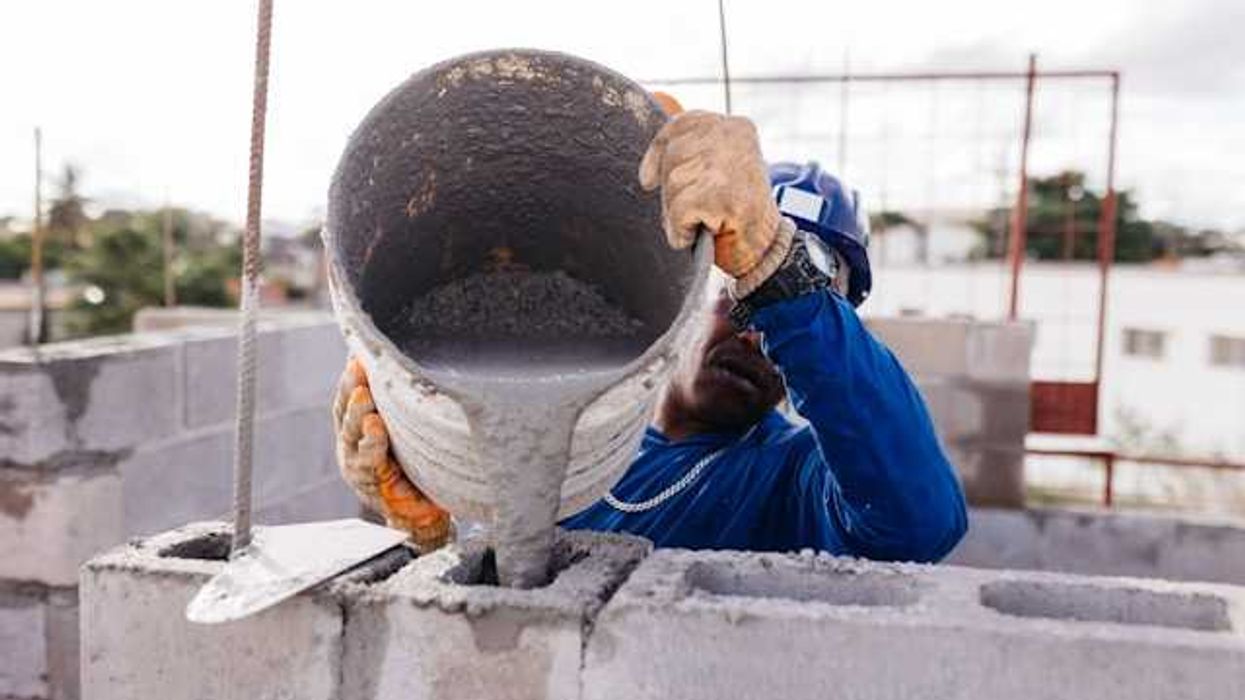WORCESTER, Mass. – When doctors told Wanda Ford her 2-year-old son had lead poisoning, she never suspected that the back yard in her low-income neighborhood was the likely culprit.
Ford knew that exposure to the heavy metal could be dangerous. So when she and her husband moved into the Lower Lincoln Street neighborhood, Ford, then pregnant, took steps to make sure their 100-year-old home was lead-free.
"We never thought to test the soil – my son played in the back yard all the time," said Ford, whose son is now seven.
It's long been known that children in poorer neighborhoods like Ford's are more likely to be exposed to lead, industrial emissions, vehicle exhaust and other contaminants. Now, scientists are beginning to suspect that low-income children aren't just more exposed – they actually may be more biologically susceptible to them, even at low levels.
A growing body of research suggests that the chronic stressors of poverty may fundamentally alter the way the body reacts to pollutants, especially in young children. Several studies have found that such stress may exacerbate the effects of lead on children's developing brains, while others reported more asthma symptoms in kids with simultaneous exposure to air pollution and socioeconomic problems.
Everyone experiences stress occasionally; it can improve focus and performance to overcome obstacles at work, during athletic competitions, or in everyday life. But stress also can harm the body.
"It's like having the fight or flight response turned on all the time." –Rosalind Wright, Mount Sinai Health System
"When the stress is chronic and the stressors are out of our control, we experience it as a threat rather than a challenge," said Dr. Rosalind Wright, a physician and epidemiologist at Mount Sinai Health System. "This type of stress can have negative, lasting effects on key systems in the body. It's like having the fight or flight response turned on all the time."
Schools and homes next to refineries and Superfund sites, farm workers drinking toxic water, urban children breathing exhaust from congested streets. Many of these people are living in poverty or with low incomes, and they have to cope with socioeconomic problems as well as high exposure to pollutants. Scientists say living in such areas and facing financial strain, racial issues and high crime rates can wear down the systems responsible for controlling immunity and hormones. Hormones needed for proper brain development may be altered, or the immune system may continually release inflammatory molecules into the blood.
"This may make you more susceptible to everything else around you, including pollution," said Jane Clougherty, an exposure scientist and epidemiologist at Drexel University Dornsife School of Public Health.
One + one = four
Stress, when combined with certain pollutants, may produce a much greater health effect than either stress or pollution alone.
"It would be like adding one and one together and getting three or four," said Dr. Ted Schettler, science director of the Science and Environmental Health Network, a non-profit organization focused on applying science to promote health. "Socioeconomic status may affect underlying biology, making exposure to certain chemicals more adverse for the poorer kid."
In Worcester, about 40 miles west of Boston, nearly one in five residents lives below poverty level, almost double the Massachusetts average, according to 2010 U.S. Census data. Its median household income is roughly 30 percent lower than the state's.
Worcester is representative of many old manufacturing towns across the country. "With a decline in manufacturing, you get a decline in certain types of pollution, but you are also left with ongoing problems such as lead contamination in soil, which is typical of a lot of older American towns and cities," said Katherine Kiel, an environmental economist at the College of the Holy Cross in Worcester. "Low-income housing is often built where property is cheapest. Unfortunately, these areas often have more pollution."
Socioeconomic stress "may make you more susceptible to everything else around you, including pollution. –Jane Clougherty, Drexel University
The eaves of Ford's home – one of Worcester's iconic triple-decker apartment houses – are blackened by soot from trucks and cars. From her front porch, she can see the on-ramp to the interstate highway that bisects the city.
"This feels like a depressed town. There are a lot of neglected, dilapidated places. It's not very child-friendly," said Ford, who is not using her real name for fear that her son will be bullied at school about his learning disabilities.
Ford is black, as is roughly 12 percent of Worcester. One small study published last year found that women in Boston who faced racial discrimination and community violence had higher levels of a stress hormone linked to preterm births.
Gang activity and a drug raid at a house nearby have brought community violence close to home. "My husband and I didn't see it at first when we moved here, but it's pervasive," said Ford.
Rates of violent crimes in Worcester are about 17 percent higher than the national average. In 2010, there were roughly 471 assaults, armed robberies and murders per 100,000 inhabitants in Worcester. The national average for that same period was 404 violent crimes per 100,000 people, according to the FBI's Uniform Crime Reports.
She worries constantly about the safety of her kids. Four of them, all under the age of 15, live at home.
When her son was born in 2004, he seemed healthy. "Looking back, there were signs of developmental delays early on, like he drooled too much, but we didn't think much of it," she said.
When he was 2, his doctor found that his blood lead levels were elevated, though they fell below the commonly defined threshold for effects of lead. Ten micrograms per deciliter has traditionally been defined as the harmful level, but recently the Centers for Disease Control and Prevention lowered it to five, recognizing that effects can occur at lower levels.
Synergy between lead and stress
With lead pollution, "the toxicity of lead may be stronger in a child also exposed to the stress of poverty," said Dr. Robert Wright, a pediatrician and environmental health scientist at the Harvard School of Public Health, and husband of Rosalind Wright.
Lead exposure, which has been linked to reduced IQs, attention problems and aggressive behavior, may be more detrimental to low-income kids than to children in families with higher incomes. Children in Boston began to show reduced IQ at blood lead levels as low as six micrograms per deciliter, while kids from families with more financial resources only began to show cognitive deficits at levels greater than 10, according to one study.
"The toxicity of lead may be stronger in a child also exposed to the stress of poverty." –Robert Wright, Harvard School of Public Health
"If this synergy exists between stress and lead, from a biological perspective, it's plausible this link exists between stress and other neurotoxic pollutants, such as mercury and polychlorinated biphenyls (PCBs) as well," said Robert Wright.
For years, toxicologist Deborah Cory-Slechta of University of Rochester and her colleagues have studied the combined effects of lead and stressful conditions on lab rats. Lead plus stress had effects on their learning ability and brains that did not occur with either of those factors alone, according to their research.
Researchers are trying to tease apart why chronic stress may make some pollutants more harmful. Both human and animal studies suggest that it can throw key systems of the body out of whack. At a young age, it may create hormonal shifts that permanently alter the way the body responds to future stresses, including chemical exposures. It also may weaken the immune system or trigger inflammation.
"Inflammation is central to a lot of chronic diseases we worry about today," including respiratory diseases such as asthma, Clougherty said.
In one study, young male laboratory rats put under chronic stress showed a rapid, shallow breathing pattern when inhaling polluted air – unlike rats exposed only to the pollution.
The researchers created a stressful environment by placing the young male rat in the home cage of an older, dominant male twice a week. The stressed rats had higher levels of molecules associated with inflammation in their blood.
Also, in East Boston, children who were previously exposed to community violence were more likely to show signs of asthma when breathing traffic-related air pollution than children in less violent neighborhoods. "This suggests a model where stress impacts the child's susceptibility to pollution," said Clougherty.
In addition to asthma, this may make low-income children more predisposed to diabetes, heart disease and even dementia later in life.
Kids living with violence also may experience more wear and tear on their DNA, damage that has been linked to disease later in life, according to a Duke University study published in April.
Susceptibility starts in the womb. Exposure to stress and pollution before birth and during early childhood may be particularly harmful because "both may alter development of the brain, lungs and nervous system during these critical periods," said Rosalind Wright.
This raises an important question: Are people protected by policies that just consider their chemical exposures without looking at their living conditions, too? Many scientists think not.
Increased risks due to social status are "a critically important but neglected area within risk assessment, and should be incorporated in the future," Harvard epidemiologists Joel Schwartz and David Bellinger and Johns Hopkins' Thomas Glass wrote in a 2011 report.
Schettler said "this new understanding has the potential to change the way we think about interventions for low-income children."
Some scientists already are working on ways to intervene to protect children. Enrichment – exploring, interacting and playing – may reduce the effects of pollution.
Improving kids' lives
"This new understanding has the potential to change the way we think about interventions for low-income children." -Ted Schettler, Science and Environmental Health Network
Tomás Guilarte, a neurotoxicologist at Florida International University, showed that it was possible to reverse cognitive effects of lead poisoning in rats by improving their environment.
Rats that had been lead-poisoned during early development and had cognitive deficits as young adults were removed from their solitary laboratory cages and housed in groups of eight in enrichment cages, which included multiple levels, a running wheel and toys.
Every week Guilarte's team put new toys in the cage. "There was a constant novelty that they would explore each week," he said.
The lead-exposed rats in the enriched cages performed equally well on learning tests as those that had never been exposed to lead. This indicates that their lead-induced learning deficits had been reversed.
"Similar interventions that play to a child's environment and the way they live could have a very significant impact on cognition and overall health," Guilarte said. Non-structured play and exercise could make a big difference for low-income children.
"I'm incredibly hopeful that by studying the way chronic stress and pollution interact, we may not only be able to devise interventions aimed at prevention, but ones for children who may already be suffering health effects from exposure to pollutants such as lead and air pollution," said Robert Wright, the Harvard pediatrician.
"There's no reason to think any more that lead poisoning should be permanent," he said.
After Ford discovered high lead levels in the soil outside her home, she worked with a local organization, Worcester Roots, which specializes in soil cleanup, to fix the problem. The group put down pebbles and mulch, and built a patio – low-cost landscaping that reduces contact with lead-tainted soil.
"It worked," she said. The doctors saw a decrease in the amount of lead in her son's blood.
Because of his developmental delays, Ford's son is supported by special education services at school. He has to work harder than the other kids to keep up in class.
"I am afraid for him," she said. "I want him to be able to function, to become well educated so that he has the freedom to choose what he does and where he lives. I don't want him to be limited in his choices."
"Stress + Pollution = Health Risks for Low-Income Kids" is the third installment of our Pollution, Poverty, and People of Color series.

















